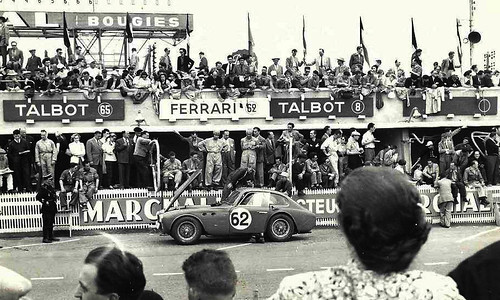Sourcing old motorsport books I came across an hilarious volume called "How to be an Alien: A Handbook for Beginners and Advanced Pupils" by George Mikes first print in 1947. Apart from being a delightful specimen of English Humour at its best, it has a fantastic chapter dedicated to the driving experience at the time. I couldn't resist publishing it in here.
"It is about the same to drive a car in England as anywhere else. To change a punctured tyre in the wind and rain gives about the same pleasure outside London as outside Rio de Janeiro; it is not more fun to try to start up a cold motor with the handle in Moscow than in Manchester; the roughly 50-50 proportion between driving an average car and pushing it is the same in Sydney and Edinburgh.
There are, however, a few characteristics which distinguish the English motorists from the continental, and some points which the English motorists have to remember.
( I ) In English towns there is a thirty miles an hour speed-limit and the police keep a watchful eye on lawbreakers. The fight against reckless driving is directed extremely skilfully and carefully according to the very best English detective-traditions. It is practically impossible to find out whether you are being followed by a police car or not. There are, however, a few indications which may help people of extraordinary intelligence and with very keen powers of observation:
( a) The police always use a 13 h.p., blue Wolseley car;
( b) three uniformed policemen sit in it; and
( c) on these cars you can read the word POLICE written in large letters in front and rear, all in capitals-lit up during the hours of darkness.
( 2 ) I think England is the only country in the world where you have to leave your lights on even if you park in a brilliantly lit-up street. The advantage being that your battery gets exhausted, you cannot start up again and consequently the number of road accidents are greatly reduced. Safety first!
( 3 ) Only motorists can answer this puzzling question: What are taxis for? A simple pedestrian knows that they are certainly not there to carry passengers.
Taxis, in fact, are a Christian institution. They are here to teach drivers modesty and humility. They teach us never to be over confident; they remind us that we never can tell what the next moment will bring for us, whether we shall be able to drive on or a taxi will bump into us from the back or the side. ". . . and thou shalt fear day and night, and shalt have none assurance of thy life" (Deut., chapter 28, verse 66 ).
( 4) There is a huge ideological warfare going on behind the scenes of the motorist world.
Whenever you stop your car in the City, the West End or many other places, two or three policemen rush at you and tell you that you must not park there. Where may you park? They shrug their shoulders. There are a couple of spots on the South Coast and in a village called Minchinhampton. Three cars may park there for half an hour every other Sunday morning between 1 and 8 A.M.
The police are perfectly right. After all, cars have been built to run, and run fast, so they should not stop. This healthy philosophy of the police has been seriously challenged by a certain group of motorists who maintain that cars have been built to park and not to move. These people drive out to Hampstead Heath or Richmond on beautiful, sunny days, pull up all their windows and go to sleep. They do not get a spot of air; they are miserably uncomfortable; they have nightmares, and the whole procedure is called "spending a lovely afternoon in the open"."
I just found out the whole book is available here online. I really recommend buying the real thing thou. It's available for few pounds on amazon.co.uk and reading it on those yellowy pages, with those beautiful illustrations and the lovely smell of old book. It sure all adds up to the reading pleasure.







